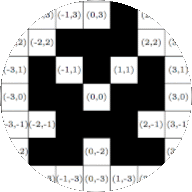Example 5.37. Reading set-builder notation.
We consider the set
\begin{equation*}
A=\{x\mid x\in\N \text{ and } x\lt 6\}\text{.}
\end{equation*}
We read this as
\(A\) is equal to the set of all elements \(x\) such that \(x\) is a natural number and \(x\) is less than \(6\text{.}\)
Notice how we use \(x\) to formulate the properties of the elements in the set. Knowing what the elements of the set of natural numbers \(\N\) and that the set \(A\) only contains numbers that are less than \(6\) we find that the set \(A\) written in roster form is
\begin{equation*}
\{ 1,2,3,4,5 \}\text{.}
\end{equation*}

